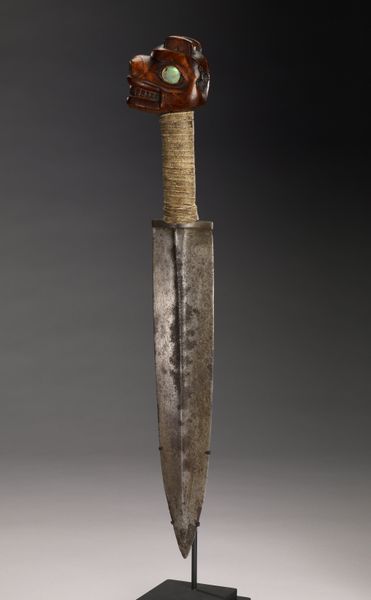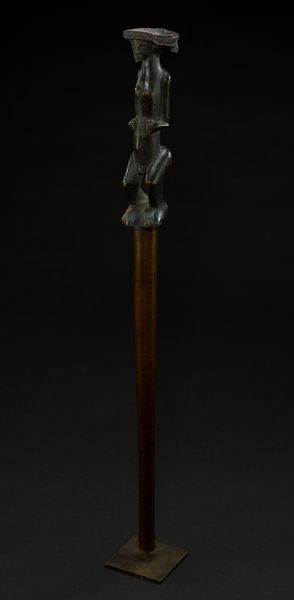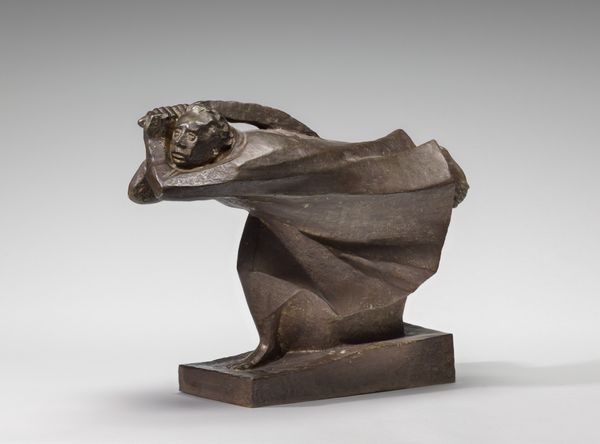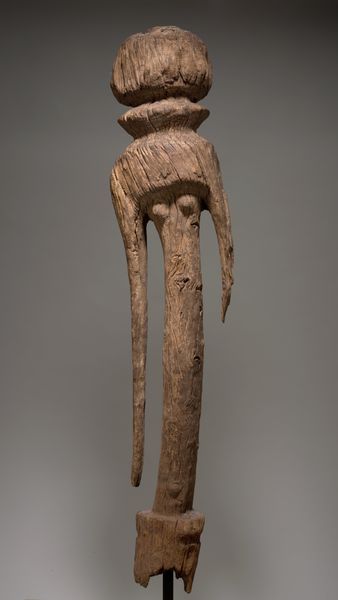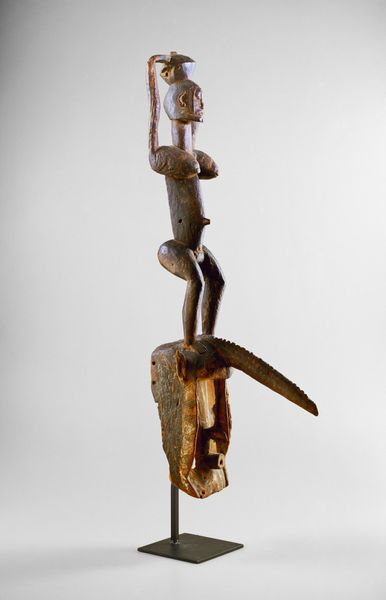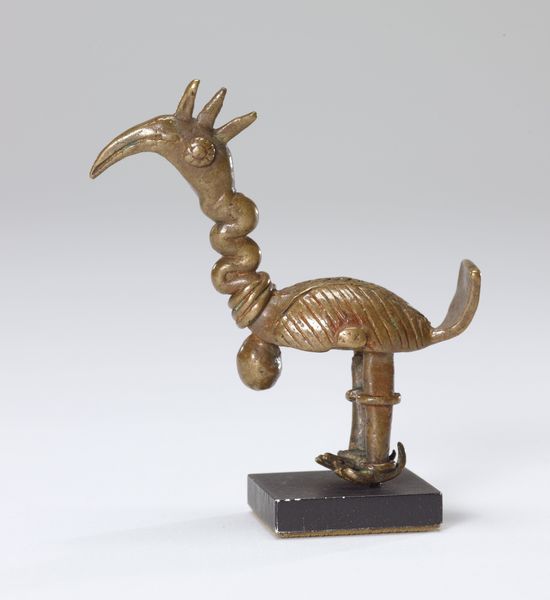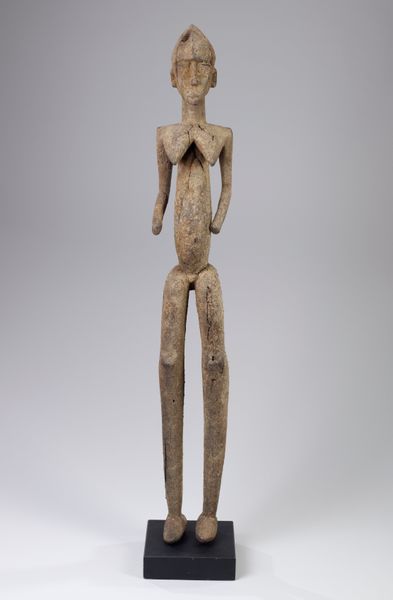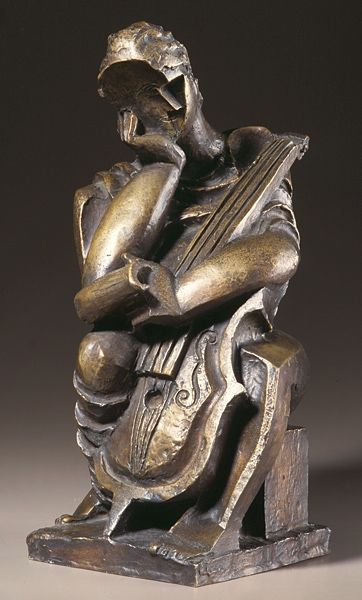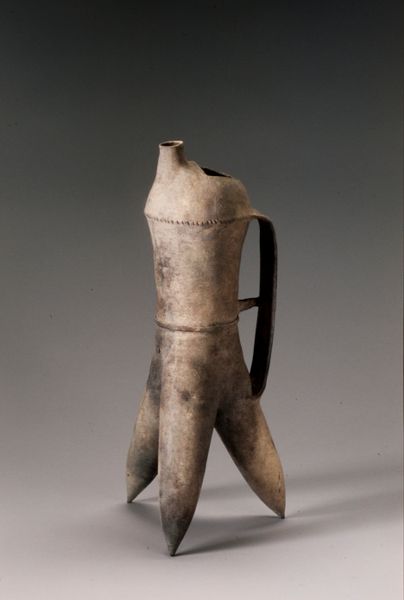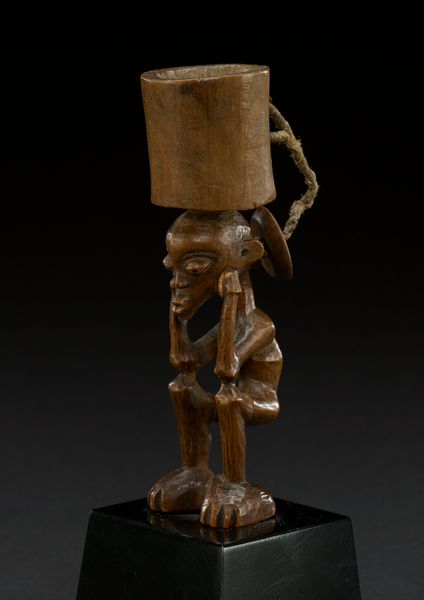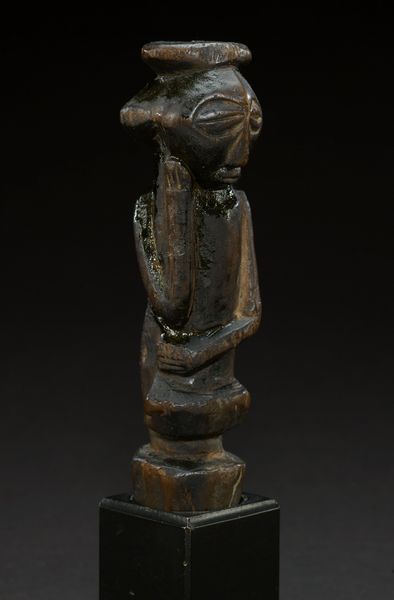
Male Ci Wara Crest from a Masquerade Ensemble 1870 - 1935
0:00
0:00
carving, sculpture, wood
#
carving
#
sculpture
#
figuration
#
sculpture
#
line
#
wood
Dimensions: H. 30 × W. 4 1/4 × D. 5 3/4 in. (76.2 × 10.8 × 14.6 cm)
Copyright: Public Domain
Editor: This is a striking piece, a Male Ci Wara Crest from a Masquerade Ensemble, created by a Bamana artist between 1870 and 1935. It’s carved from wood and now resides at the Metropolitan Museum of Art. I’m really drawn to how elongated and stylized it is, and the surface texture created by the carving. How do we interpret an object like this through a materialist lens? Curator: Looking at the Ci Wara crest, the first thing that strikes me is the process of its creation. The carving itself—what tools were used? Where did this wood come from? The labor embedded in extracting and shaping the raw material, and the cultural knowledge required, become central to our understanding. How might the availability of specific wood types, or trade routes for tools, have impacted its form? Editor: That’s fascinating. So it’s not just about the finished object, but tracing its origins and the human effort involved? Curator: Exactly. And then think about its original context: a masquerade ensemble. This wasn't created as a standalone sculpture for contemplation, but as part of a performance inextricably linked to Bamana agricultural practices and social structures. How does its function as a masquerade component, meant to be worn and danced, change how we view it versus its display in a museum? Editor: So, we consider the masquerade’s role in celebrating agricultural success and social harmony. And how does that affect its consumption as an art object today, displayed far from its original setting? Curator: Precisely. By focusing on the labor, the materials, and the original social context, we can move beyond simply admiring its aesthetic qualities. The commodification of this object—removed from its community and placed in a Western museum—raises complex questions about cultural appropriation and the objectification of ritual practices. What is gained, and what is irrevocably lost, in this translation? Editor: That gives me a whole new perspective to appreciate not only the artistry but also its historical journey and social implications. Curator: Indeed. Thinking about art through a materialist framework reveals the complex web of relations—labor, resources, cultural meanings—that shape its very existence.
Comments
No comments
Be the first to comment and join the conversation on the ultimate creative platform.
